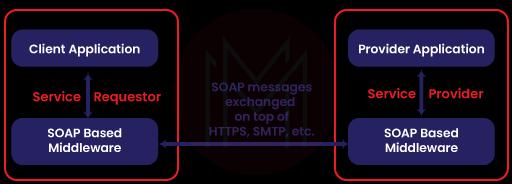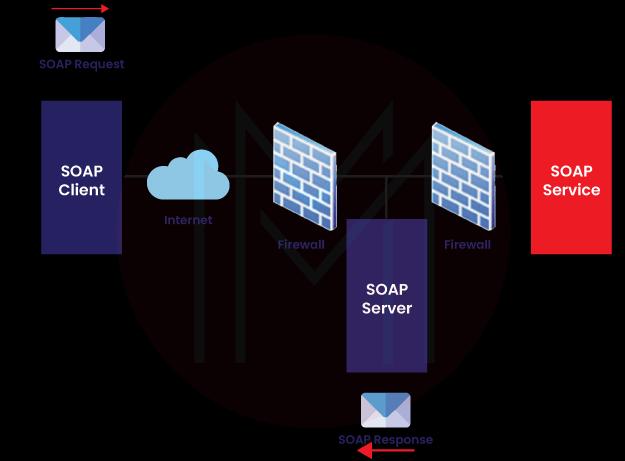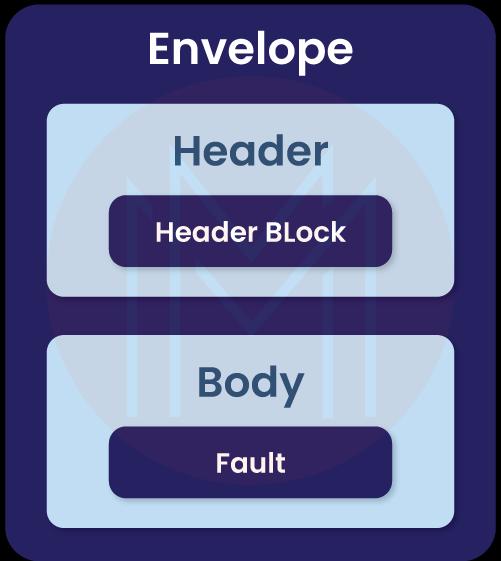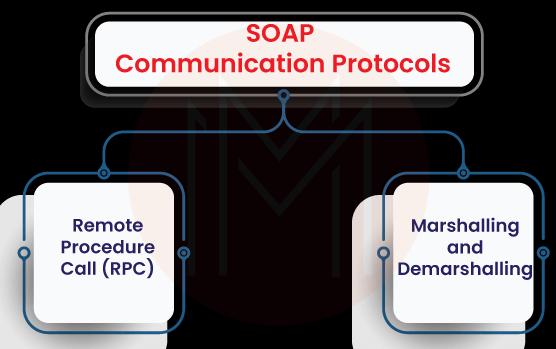- Abstraction in Java
- Clojure Tutorial
- Control Statements in Java
- Core Java Interview Questions
- Data Types in java
- Top 9 Java EE Frameworks
- Java EE vs Spring Framework
- Java Frameworks List - Top 14 Java Frameworks
- Java Interview Questions
- Java Tutorial
- Java Web Dynpro Interview Questions
- JavaFX Interview Questions
- Method Overloading in Java
- Multithreading in Java
- List of Popular Open Source Java Build tools
- Operators in Java
- Program Logics in Java
- String Handling in Java
- Why You Should Learn Java Programming
- Data Structures Interview Questions
- Exception Handling in Java
- Multithreading Interview Questions
- Design Patterns Interview Questions and Answers
- C++ Interview Questions and Answers
- JSP Interview Questions
- EJB Interview Questions
- JPA Interview Questions
- DXC Interview Questions and Answers
- Java Architect Interview Questions
- Java Concurrency Interview Questions
- What is Java Concurrency?
- What is JPA - Complete Tutorial Guide
- What is EJB?
- Java Collections Interview Questions
- Java Swing Tutorial
- Java Stream Tutorial
- Linked List Interview Questions
- Compiler Design Interview Questions
- Java Collection Tutorial
- Java Stream Interview Questions
- Thymeleaf vs JSP
- Thymeleaf Tutorial - What is Thymeleaf
- Socket Programming in Java - What is TCP
- Apache Tomcat Interview Questions
- Capgemini Interview Questions
- Zoho Interview Questions
- PwC Interview Questions
- Hexaware Interview Questions
- Intuit Interview Questions
- Tech Mahindra Interview Questions
- Qualcomm Interview Questions
- Arcesium Interview Questions
- PayTM Interview Questions
- DXC Technology Interview Questions
- Java Developer Job Description
- MAQ Software Interview Questions
- Amdocs Interview Questions
- TCS NQT Interview Questions
- Virtusa Interview Questions
- Siemens Interview Questions
- Tricky Java Interview Questions
These days, new web applications are increasingly being created in large numbers using various programming languages such as – Java, PHP, .NET, etc. Exchanging information between these applications is one of the challenges developers face nowadays.
In this regard, XML language solves this problem to a certain extent but is not complete because it lacks specific standards. As a complete solution, tools such as REST API and SOAP support exchanging information between different applications with the support of various transport protocols.
Though REST API is widely used across many applications, SOAP is one of the simple and powerful protocols that ensures standardized data exchange between applications. SOAP uses various standards and protocols to make an effective web service.
In this write-up, you will learn about SOAP, its features, how it works, its advantages, the difference between SOAP and REST API, and many more.
| Table of Content - SOAP in Web Services |
|
➤ How does SOAP Exchange information? ➤ Why do We Need SOAP in Web Services? ➤ What is the Architecture of the SOAP Message? ➤ What are the SOAP Communication Protocols? ➤ How Can We Differentiate SOAP from REST API? |
What is SOAP?
SOAP refers to Simple Object Access Protocol, an XML-based lightweight communication protocol. It is used by applications to request a web service from other applications. Unlike REST API, SOAP protocol uses XML formats for data exchange with encoding rules, defined data structure, and service requests and response standards. Because of its built-in functionalities, SOAP is best known for its platform independence.
SOAP simplifies communication between two web applications. In other words, SOAP is used to request a web service and receives a response from it. Mainly, SOAP uses specifications for exchanging structured information between applications. The specification describes a standard XML method for encoding requests and responses. Moreover, requests are processed by SOAP messages over HTTPS, SMTP, and TCP transport protocols.

| If you want to enrich your career and become a professional in Core Java, then enroll in "Core Java Online Training" - This course will help you to achieve excellence in this domain. |
How does SOAP Exchange information?
As you know, SOAP supports you in exchanging information between web applications. Let’s see now how it works.
At first, the SOAP client creates a service request, and it is sent to the ‘SOAP request handler’ of a web server through HTTP or HTTPS transport protocols. Now, the web server receives the request and then processes it to the web service provider.
The service provider responds to the 'SOAP request handler' in terms of requested parameters or data or return values. Eventually, the response is sent to the service requestor. Note that XML format is used for sending a request and receiving a response in SOAP protocol.

Why do We Need SOAP in Web Services?
The SOAP protocol is preferred in many enterprise communications, even though many APIs are available today. Here are the reasons you can find now:
Know that SOAP is the protocol recommended by the W3C consortium for data exchange. SOAP acts as the perfect tool to simplify communication between two different applications that may use different operating systems and programming languages.
Besides, the SOAP protocol is developed as an intermediate language so that any application developed by any programming language can use this protocol feasibly. As a result, it eliminates language conflicts among applications while using SOAP.
Key Features of SOAP
SOAP protocol comes with many salient features for exchanging information between applications. Let’s dive into the key features of SOAP now.
Extensibility: Extensibility is well-achieved in SOAP through WS standard protocols such as WS- ReliableMessaging, WS-Security, etc. You can use any of these protocols based on the web service that you intend to make. For example, if you would like to make a secured financial transaction, you can choose the WS-Atomic transaction protocol.
ACID Compliance: ACID refers to Atomicity, Consistency, Isolation, and Durability. ACID compliance is one of the essential qualities required while exchanging sensitive information. With WS-Atomic transaction protocol, SOAP achieves ACID compliance in data exchange.
Use of WSDL document: WSDL is the short form of Web Service Description Language. WSDL has the XML description of a web service. And it includes all the data types used in SOAP messages and the actions to be performed. Know that SOAP uses WSDL extensively because it supports different languages and IDEs to set up communication procedures.
Retry Logic: SOAP protocol adopts retry logic. In other words, SOAP delivers error codes and explanations in the form of XML messages if any fault occurs in the data exchange.
| Related Article: A Beginners Guide for Java Tutorial |
What is the Architecture of the SOAP Message?
Basically, SOAP is a message written in XML language. SOAP message has the elements such as an Envelope, header, body, and fault. Let's have a thorough understanding of the elements below:

Envelope: It is the root of the SOAP message and carries an XML document as a SOAP message. It is the containing part of the SOAP message and encapsulates the information to be exchanged. This way, it provides the message structure and information for processing the SOAP message. As the name indicates, tags envelop every SOAP message at the beginning and the end. Know that the Envelope has two child elements header and a body.
Header: It is an optional sub-element and the first child of the SOAP envelope. It will contain application-specific information such as authentication, payment, etc. Not only that, the header supports passing information to SOAP nodes through the message path.
Body: It is the mandatory sub-element of the SOAP envelope. Of course, the body contains the core SOAP message. It has information in the form of a service request or service response, which has to reach the client or the service provider.
Fault: It is the sub-element and the child element of the SOAP body. It is used to report errors and error status information.
What are the SOAP Communication Protocols?
SOAP supports two types of communication protocols Remote Procedure Call (RPC) as well as Marshalling and Demarshalling.
Let’s discover more about them as follows:

Remote Procedure Call (RPC): RPC is one of the simplest protocols but has many limitations. And it is a service-specific interface between a client and an RPC-style web service. In RPC, the client will call the methods in the service request and send the needed parameters to the web server. Finally, the server will return the response to the client accordingly. Know that existing RPC-based systems are DCOM, EJB, Java RMI, CORBA, etc.
Marshalling and Demarshalling: Marshalling is the process of encapsulating information in a SOAP message. Here, information is formatted before embedding it into the SOAP message, and then the information is sent to the service-side server through the HTTPS request. On the other hand, Demarshalling is the process of opening up the information from the formatted message by the server and replying with an appropriate response to the client.
| Related Article: Java Interview Questions & Answers |
What are the SOAP Nodes?
Constructing a SOAP message is achieved by using SOAP nodes. And these nodes play a key role in the SOAP message flow. Following are the SOAP nodes and their uses.
SOAPInput Node: The input node receives the incoming service requests.
SOAPReply Node: This is the node used to send responses to clients.
SOAPRequest Node: This is the node used to call a web service provider synchronously in a message flow.
SOAPAsyncRequest and SOAPAsyncResponse Nodes: These are the nodes used to call web services asynchronously.
SOAPExtract Node: This is the node that will interoperate within the SOAP domain
SOAPEnvelope Node: This is the node required for HTTP transport protocols
How can We Differentiate SOAP from REST API?
As said earlier, SOAP and REST API are the two commonly used web APIs. Here, REST is known as Representational State Transfer. Although many applications mainly use REST API due to its flexibility and other features, SOAP is also increasingly getting attention due to its structure, standards, and data type control.
When comparing SOAP and REST API with real-time examples, we can equate ‘envelopes’ with SOAP protocol and ‘postcards’ with REST API. On the one hand, we can read the information directly from a postcard. Similarly, information can be directly read by servers while using REST API. On the other hand, you need to unwrap an envelope to reach the letter. Similarly, the Envelope of the SOAP messages has to be unwrapped to get the information.
| SOAP | REST API |
| It has both state and stateless design | It has only a stateless design |
| SOAP is independent of transport protocols. And it uses HTTP, SMTP, TCP, FTP, etc. | Only HTTP or HTTPS protocol can be used in REST API |
| SOAP is a communication protocol | REST API has a client-server architecture style |
| It uses only XML language with schemas, so efficiency is not good as REST API. | Efficiency is good since it uses JSON, HTML , XML, formats |
| Works slower | Works faster |
| Need tight coupling between client and server, which in turn increases complexity | REST API is usually separated from data storage and the back end. That is why it is independent and flexible. |
SOAP Use-cases
Following are the few use cases of SOAP you can find now:
- SOAP is helpful in highly advanced operations such as billing, facilities, and navigation.
- SOAP would be a best-it protocol for bank transactions and payment systems since it obeys WS-Security and ACID compliance protocols.
- Flight booking can be made simpler and faster with the support of SOAP protocol.
| Related Article: Java Multithreading |
SOAP Example
Consider getting a ‘price list’ from an application using a SOAP message. For this, you need to send a ‘getpricelist’ request to the SOAP server over the HTTPS transport protocol. The request will have ‘quotationname’ parameters and ‘namespace’ details.
The following images show the request sent to the SOAP server and the response given by the server.
POST / pricelist HTTP /1.0
Host: www.abc.org
Content - Type: text/xml; charset = utf-8
Content - Length: nnn
<?xml version = "1.0"?>
<SOAP-ENV: Envelope
xmlns: SOAP-ENV="http://www.xyz.org/2001/12/soap-envelope"
SOAP -ENV:encodingstyle="http://www.xyz.org/2001/12/soap-encoding">
<SOAP-ENV:Body xmlns:m="http://www.abc.org/quotations">
<m:GetPricelist>
<m:PricelistName>Miscrosoft</m:pricelistName>
</m:GetPricelist>
</SOAP-ENV:Body>
</SOAP-ENV:Envelope>
The following images show the response given by the server.
HTTP /1.0 200 ok
Content - Type: text/xml; charset = utf-8
Content - Length: nnn
<?xml version = "1.0"?>
<SOAP-ENV: Envelope
xmlns: SOAP-ENV="http://www.xyz.org/2001/12/soap-envelope"
SOAP -ENV:encodingstyle="http://www.xyz.org/2001/12/soap-encoding">
<SOAP-ENV:Body xmlns:m="http://www.abc.org/pricelist">
<m:GetPricelistResponce>
<m:Pricelist>Here is the quotation</m:pricelist>
</m:GetPricelistResponce>
</SOAP-ENV:Body>
</SOAP-ENV:Envelope>Advantages of SOAP
Let’s now look at the advantages of SOAP protocol in the following:
Neutrality: SOAP supports any programming language and works in a distributed enterprise environment
Independence: SOAP messages can be processed on any platform. In other terms, it can work on both Windows and Linux.
Scalability: As SOAP uses HTTPS transport protocol, it can be scaled easily. With HTTPS, SOAP overcomes firewall problems.
Security: SOAP comes with its own security standard - WS security.
Automation: SOAP can be automated while working with certain language products
Disadvantages of SOAP
Where there are pros, we know there must be cons as well. Let's face the disadvantages of SOAP below:
Slower: The use of XML formats in SOAP decreases the speed of requests and responses significantly.
Resource-consuming: SOAP requires long-length Payloads for transferring even simple string messages. So, it needs larger bandwidth for exchanging information.
Firewall Latency: Since SOAP uses HTTPS protocol, firewall latency may occur during data exchange. This is because firewalls analyze HTTPS protocols usually.
Hard Learning Curve: As SOAP works based on many protocols and standards, developers must thoroughly understand these matters. For this, they need to dive deep into these protocols and standards to know better.
Tight Coupling: SOAP requires a tight coupling between the client and the server. If any fault occurs on either side, it will affect both the client and the server.
Conclusion:
To wrap things up, we will recollect the essential points once again. Remember, SOAP is the communication protocol used to interchange data between two different applications developed in different languages. It’s worth pointing out that SOAP is known as one of the perfect protocols for web services because it uses XML language as well as the HTTPS transport protocol. In short, SOAP is a robust, versatile, highly standardized, and more secure communication protocol.
 On-Job Support Service
On-Job Support Service
Online Work Support for your on-job roles.

Our work-support plans provide precise options as per your project tasks. Whether you are a newbie or an experienced professional seeking assistance in completing project tasks, we are here with the following plans to meet your custom needs:
- Pay Per Hour
- Pay Per Week
- Monthly
| Name | Dates | |
|---|---|---|
| Core Java Training | Dec 27 to Jan 11 | View Details |
| Core Java Training | Dec 30 to Jan 14 | View Details |
| Core Java Training | Jan 03 to Jan 18 | View Details |
| Core Java Training | Jan 06 to Jan 21 | View Details |

Madhuri is a Senior Content Creator at MindMajix. She has written about a range of different topics on various technologies, which include, Splunk, Tensorflow, Selenium, and CEH. She spends most of her time researching on technology, and startups. Connect with her via LinkedIn and Twitter .
















